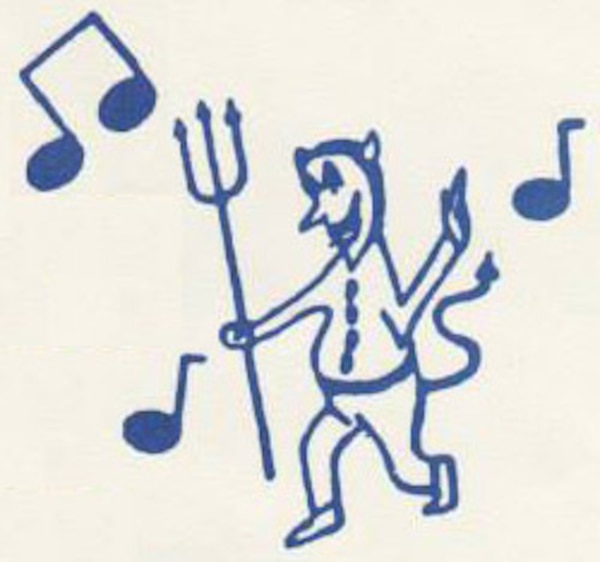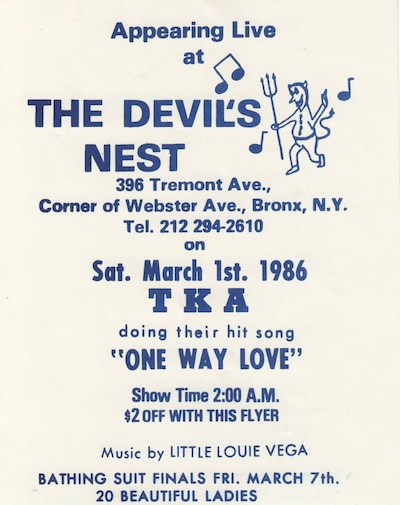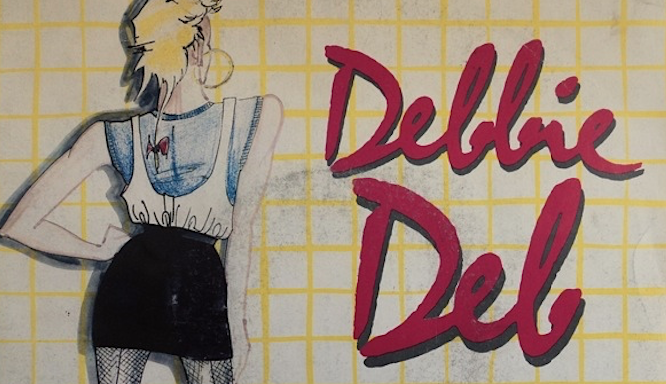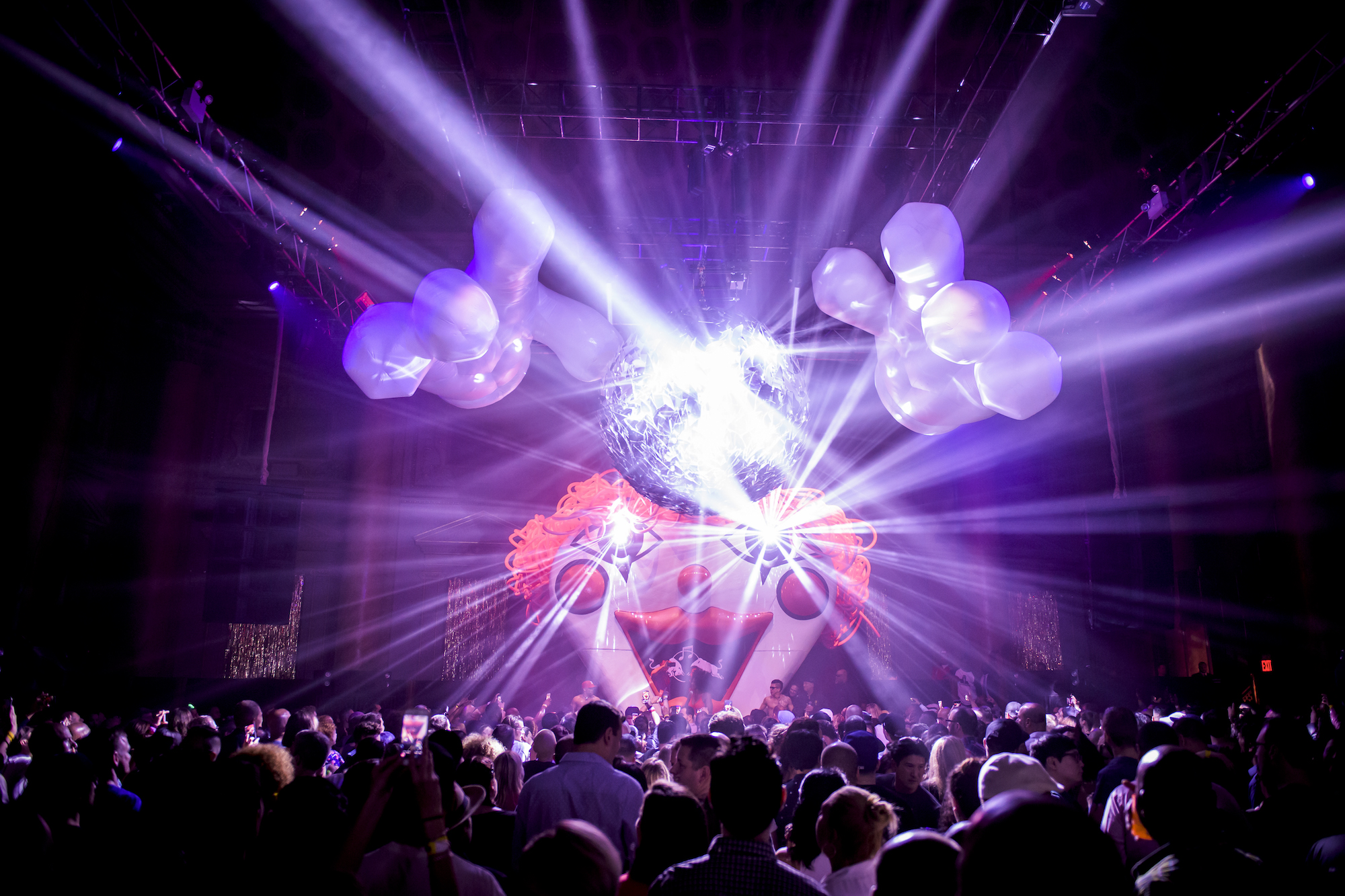Nightclubbing: The Devil’s Nest, NYC’s Freestyle Club

The Devil’s Nest – once located at the corner of Webster and Tremont Avenues in the South Bronx – was only open for nine months, from August 2, 1985 until April 1986. But in that time it was able to shape New York City’s nascent freestyle scene and launch the careers of Big Apple-based artists like the Cover Girls, Nayobe, George Lamont and Judy Torres, many of them still in their teens when they graced Devil’s stripped-down stage.
For the full story behind the making of Shannon’s “Let The Music Play,” click here.
By the mid-’80s, freestyle music was very quietly incubating all around NYC but it didn’t have a name yet. In the Meatpacking District, Funhouse resident DJ Jellybean Benitez was dropping demos of early hits like Shannon’s “Let the Music Play” and Lisa Lisa and Cult Jam’s “I Wonder If I Take You Home” from a DJ booth set inside the mouth of a giant clown. From Wednesday through Sunday, clubs like Bond’s in Midtown, Danceteria in the Flatiron, L’Amour East in Queens were packing in several thousand people, and the sounds of Noel, Nayobe and Debbie Deb were getting dropped in alongside disco, hip hop and pop.
Read an oral history of freestyle music.
The Devil’s Nest, with its seductive name and glittering foil curtains, started as a glimmer in the eye of promoter and club owner Sal Abbatiello. Sal had already made himself a name locally after he turned his father’s Bronix neighborhood bar into a hip hop nightclub called Disco Fever; “the rap capital of the Solar System,” proclaimed a 1983 People magazine article. Disco Fever – which can be seen in the 1985 movie Krush Groove – helped launched the careers of Grandmaster Flash, Sweet G, Run-D.M.C. and Kurtis Blow, and Sal further promoted the sound with his Fever Records label (which later released freestyle artists like Cynthia and Lisette Melendez). “The first time I met Sal was at a rollerskating rink for one of his Skate Fever events. I was 11,” recalls George Lamond. “He was the only white dude hanging out with blacks and Latinos, and he gave a lot to the community: helped out with basketball tournaments and do street fairs with Chill La Rock and Lovebug Starski.”
Sal Abbatiello
The Fever was getting ready to get closed up for no cabaret license, Krush Groove was getting ready to come out and I didn’t know what to do with my future. Hip hop had blown up and The Fever got all old and it was played out. So I’m sitting in this park and I’m watching these Puerto Rican kids breakdancing. Then it hit me: Latin hip hop. There was no music out yet really, but I was calling it Latin hip hop because I’m going by the culture and the movement.
I was helping my father promote this Latin club he owned that was in the Bronx, not far from The Fever. I called him and said, “Yo, I found a new movement: Latin hip hop.” He’s like, “Forget about hip hop. I don’t want to deal with hip hop no more.” I said, “I’m telling you, this is going to be the new thing, man. It’s second-generation Puerto Ricans speaking English and their parents and grandparents are listening to salsa. The children and grandchildren are now finding their own way in America.”
Now Gloria Estefan comes out with a song called “Conga.” I’m like, “Wow! A salsa group, Miami Sound Machine, just made an English record with a Latin flavor.” I could see the writing on the wall only because of my experience of finding hip hop in the street. This time I’m going to make the record, I’m going to get in the club, I’m going to manage the artists – everything.
A few weeks later I ran into Andy Panda and started working with him and Nayobe. In the middle of all this, the biggest promoter in New York, Ralph Mercado – he had all the big salsa groups, Tito Puente, La India, Marc Anthony – gets a deal at the Palladium in Manhattan and leaves my father’s club. It goes from a thousand people to zero. I approached my father again, like “Yo, I told you a few months ago about Latin hip hop!” Now he’s desperate.
So what do I do? I go get Little Louie Vega to DJ, just like I found Grandmaster Flash before. I bring in Andy Panda, who I just met. He’s 19 years-old and he lives in Jersey and I’m going to make him the manager of the club within weeks! My talent was finding people with talent. Anyway, now everyone’s ridiculing me: a 19 year-old club manager and this new Puerto Rican DJ. Now we’re going into ‘85. As we’re getting the club ready to start, we put Nayobe’s “Please Don’t Go” out on the street and all of a sudden it blows up. There’s such a big Latin community of second and third generation Puerto Ricans and now this is their own shit! They got their own sound.
Louie Vega
In the early ’80s, we used to play the YMCAs and throw parties and jams. We used to get over a thousand people in the Bronx coming to these places. We were playing the music that we heard at The Funhouse, The Garage – everything all mixed together. By 1984, I did a party on my own up in the Bronx. The hot record at the time was “Please Don’t Go” by Nayobe. I hired Nayobe for a show and management came with her. They were like, “Wow, look at Louie. He’s got all these people following him.” So Sal said, “We’d love for you to play at this place called The Devil’s Nest.” A year later, in August 1985, I became a resident there.
I was the skinniest little 21 year-old Puerto Rican kid running the hottest club in the Bronx.
Andy Panda
The space used to be a bowling alley, so it was pretty big; it was in a basement downstairs, so Sal’s father, Allie, wanted to name it something related to the devil or an inferno. Devil’s Nest was probably the biggest club in the Bronx; on a good night we would put 1,500 people in there.
Sal knew I was a DJ and he said, “I’ll make you the DJ at the club when we open it.” I used to go hang out with Sal and his father when they were building the club. As the time got closer for it to open, they were like, “You’re a smart kid. We want to hire you as the manager instead.” I was devastated, but I did it. I’m this 21 year-old kid, just outta college and here I am on the corner on Webster and Tremont in the Bronx and I have a full staff that’s reporting to me. I was the skinniest little Puerto Rican kid running the hottest club in the Bronx at the time. But Sal and his father taught me everything I needed to know. I got more of an education in those two years...
Aldo Marin
The Funhouse was more Brooklyn, Staten Island folks, but people came from everywhere since it was downtown. With the Devil’s Nest, you had the Bronx hardcore guys going there, the rappers.
It was dark, dingy, moist and it smelled like gum.
George Lamond
The Devil’s Nest looked like a dark pool hall with these ugly aluminum foil curtains. I used to think they were the brightest, most pulsating things I’ve ever seen but I look at pictures now and it was just foil paper. It was dark, dingy, moist and it smelled like gum. It was just a bunch of two-by-four plywood all over the place, painted in black and red. They had the biggest speakers I’ve ever seen, propped all over the place.
Andy Panda
It was dark and the walls were red. We took these big fishtanks and laid them on the floor and put fluorescent red lights in them and then topped them with benches covered in red carpet. It looked like a Manhattan club. On Friday nights, we wouldn’t have live acts but we’d play these games between the DJs. We used to have our version of The Gong Show and The Dating Game. Or Louie would play the Inspector Gadget theme and I’d come out in a raincoat and spray the whole crowd. I mean, that kind of stuff just wasn’t done in other clubs.
Sal Abbatiello
Devil’s Nest was huge. It was almost 10,000 square feet and held like 1,200 people. It was a perfectly square club. We had a huge nice stage and we had the DJ booth all the way up; we had to climb up a pretty long ladder to get in there. Everybody was in high school or just starting college. In the crowd, you got people like La India, George LaMond. Biz Markie did his first show there, and Joeski Love with “Pee Wee’s Dance.”
We started on a Saturday night. We put Louie in and it was jam-packed the minute we opened. Back then the drinking age was 18 but you’re talking about kids sneaking in, 16, 17. Everybody was drinking when they were 15. Everybody. Back then, there was no clubs for young Latinos.
Al B11via Discomusic.com Message Board
People packed The Nest like sardines in a can. Besides it being a death trap, it was a sweat box! You could see the fog from sweat from the people who packed the place. Your clothes would be literally drenched.
Louie Vega
At Devil’s Nest, I was breaking a lot of records. We found this independent record called “Running” by Information Society. The next thing you know, it blew up so big. We went in search for them and had them perform. They couldn’t believe it: these white kids from Minneapolis were like, “We’re going to the Bronx?” That ended up being the first song I ever mixed, right around the end of the Devil’s Nest. Then I did Noel “Silent Morning “and the Cover Girls. Then I worked on a song called “Because Of You” with Robert Clivilles and David Cole [of C&C Music Factory].
Andy Panda
Louie was the DJ that was breaking most of the new freestyle stuff. TKA, Cover Girls, Sweet Sensation, Exposé, Stevie B, Nice N Wild, Judy Torres, Cynthia. I can’t think of any freestyle artist that didn’t play the Devil’s Nest. But it was one of those clubs where you had to come correct. There was this girl called Diamond Eyes who had a song that was doing well called “I Won’t Stop Loving You.” She came to perform and she wasn’t very good, and the whole crowd started throwing ice at the stage. The poor girl was getting wacked with ice cubes in the head for her whole set.
Kayel
The community would shift clubs depending on what night of the week it was. If Louie Vega was playing on a Friday night at the Devil’s Nest, we’d be there. If Roman Ricardo were at 1018, then we would go there. If Glen Freesia was at Red Parrot we would go there. Wednesday through Saturday were basically my club nights. I think Monday and Tuesday were the days that I had off and I used them to meet up with the girls that I would meet at the clubs during the week.
When TKA played at the Devil’s Nest, it was crazy. At that time, La India, [a famous salsa and house music vocalist who was once married to Louie Vega – Ed.], was in the group. I had met her because I was dating her cousin. Being that we’re both dark-skinned Puerto Ricans with big eyes, we looked like we might have been related. There was quickly a kinship between the two of us, but she is probably the most eccentric woman – even as a teenager – that I ever met in my whole life. She was Lady Gaga at 13, before Lady Gaga existed. She would have these odd outfits she would wear, like she’d wear a witch’s hat with a sports bra and a pair of jeans tied with a black rope and the pointiest shoes ever. Before the kids in the village were doing Goth, she was doing Goth up in the Bronx.

Andy Panda
The term “freestyle” was born in the Devil’s Nest. There were these guys and girls that used to come – they had cut their teeth at David Mancuso’s The Loft, they were Loft dancers. We used to say, “Oh they’re sweeping the floor;” they would dive around and do these really dramatic, almost ballet-style moves. But when the freestyle music would come on they would change the way they danced. They would say “This is not Loft music, so we’re not lofting anymore; we’re just freestyling.”
Sal Abbatiello
By the time 1986 rolled around, Devil’s Nest was off the hook. Now what happens? They change the drinking law to age 21 from 18. These kids have been drinking for years. Now all of a sudden they can’t drink. We lost the whole crowd. Heartthrob opens up and they’re gonna do an “18-to-party” juice bar. They call Lil Louie. That club holds 4,000 people, my club holds 1,000 and all my patrons want liquor. I became a promoter after that and I never opened another club. I did some of the biggest parties in the city – 5,000 or 6,000 people at Roseland or 1018.
Louie Vega
I played at The Devil’s Nest in 1985 for nine months. Then I moved to Hearthrob (which used to be The Funhouse), and I did that in ‘86 and ‘87, for a year and ten months.
Andy Panda
Sal and I lasted at the Devil’s Nest until about the end of ‘86. Then the Cover Girls started getting really popular and we started traveling and things started to get a little hectic. I just told Sal, “This is too stressful. We’ve got too much good shit going on to risk our lives every weekend.” I mean, I was carrying a gun to work. Something wasn’t right with that picture. After the Devil’s Nest closed, 1018 became our hangout. Wednesday night at 1018 was industry night and during the New Music Seminar they would do a huge show. But I’ll never forget all the time I spent with Sal and with my now-wife at the Devil’s Nest (she worked the coat check and then she was a bartender). Sal says we’re the club’s most famous couple!
Header image: Joey Gardner / Flygroove Entertainment

